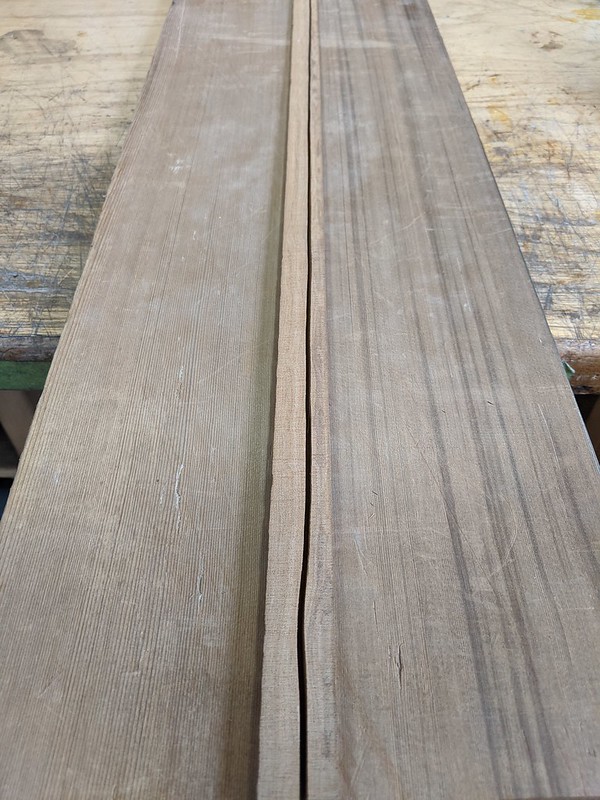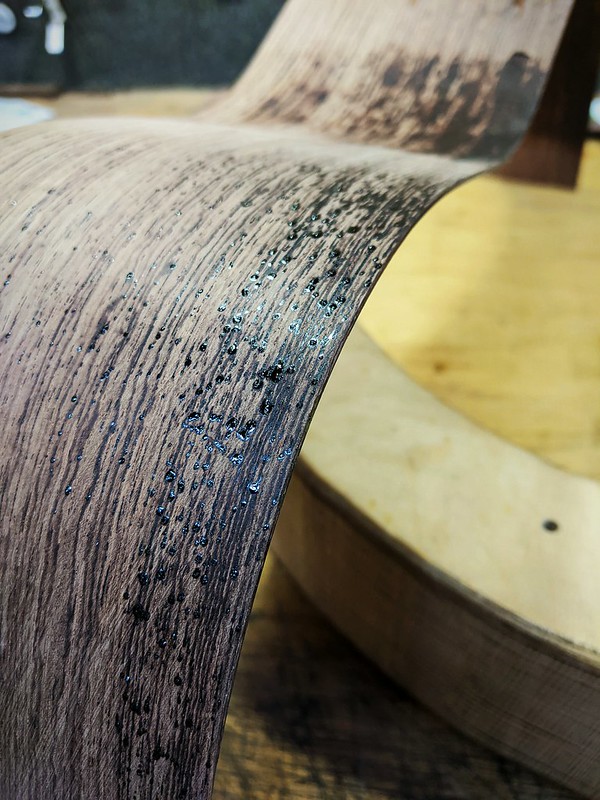Hi Everyone,
I'm just starting to dive in on my next build which will have a bunch of extras and customized bits throughout the guitar. It will be my Concert model (roughly an OM size), Honduran rosewood back/sides, western red cedar top, florentine cutaway, arm bevel, elevated neck, sound port, tornavoz, and various inlay designs. Looks like I've got my work cut out for me for the next month or two!
In a first for me, my client has supplied most of the wood for the build. In most cases I would be incredibly wary about an arrangement like this but luckily he lives in Montreal and I was able to get my hands on the wood before agreeing to take it on. Most of the wood is 25+ years old, well dried, and has personal significance for the client which, as you'll see, is a major theme in this guitar.
First thing up was slicing up the billet of western red cedar. The board was nicely quartered and straight but I wanted to insure I could minimize run-out before cutting the top. So, I sliced off a thin strip from either side and with a knife and whack or two of a hammer split the strips down the middle. From the picture below you can see the split angles slightly towards the right edge and that there is a wooble towards the bottom (wooble being an official luthiers term)...

First I cut the billet to top length (eliminating that wooble section) and then planed the face of the cedar parallel to the split. When you hear luthiers talking about "long grain" or "run-out" the above is a good visualization of what they're referring to. Now when I take a slice off of the edge and split it, the split stays parallel to the face and doesn't emerge on one side (hence, long grain). If I hadn't made the face parallel to the split you end up with run-out (what you're seeing when one side is darker than another). Hope that all makes sense! And here it is joined up...

For the back and sides, the client bought them off of someone on a boat in Belize 25 years ago so we're not 100% positive what kind of wood it is but my money is on Honduran rosewood. Here I am shooting a joint on the back...

You can see a bit of a wind-shake crack along the edge but that will be well outside of the body and isn't a concern. Joining it up...

A look at the sides and cut out top...

The sides were a little bit tricky to bend mostly because of all the resin bubbling out while working it on the hot pipe! It was also mildly more nerve wracking knowing the personal history behind the sides that made the essentially irreplaceable -- thankfully all went well!

There is going to be a LOT going on with this guitar so thanks for looking and stay tuned!